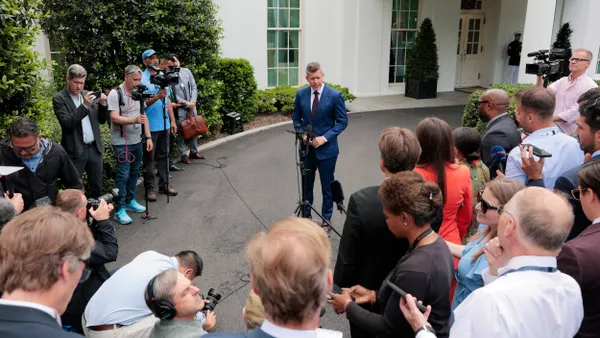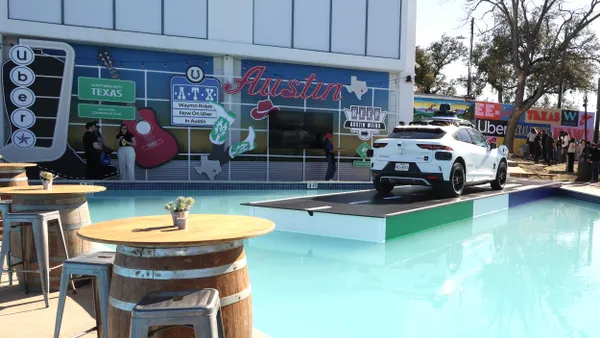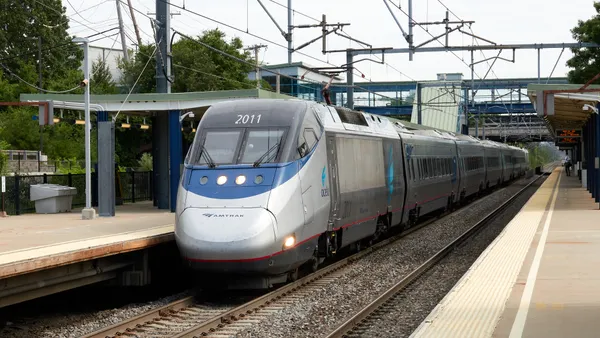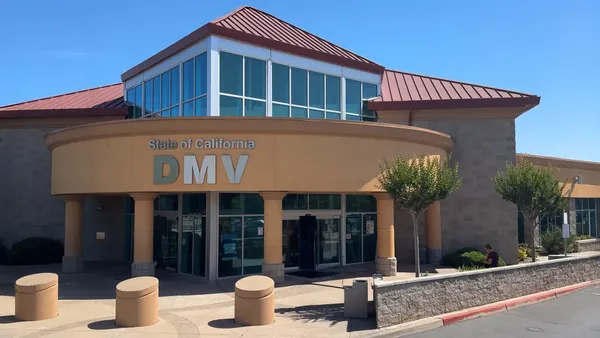Dive Brief:
-
More on-demand transit services, paired with regulations to discourage personal car ownership, could reduce traffic in cities by 15% to 30%, according to a new report from ride-hailing company Via and The Boston Consulting Group's (BCG) think tank, The BCG Henderson Institute. The year-long study looked at on-demand, or microtransit, use in Arlington, TX; Berlin; Seattle; and West Sacramento, CA.
-
Microtransit can have significant benefits for reducing congestion, according to the report. Drivers in the Dallas-Fort Worth metroplex, of which Arlington is a part, sit in 45 hours worth of traffic per year, the report found. On-demand transit eliminated almost 400,000 miles traveled for Arlington residents if they had driven alone, equating to 36% fewer total vehicle miles traveled.
-
On-demand transit services can also help cities complement mass transit use, according to the study. In Arlington, 27% of the trips taken were to and from the regional commuter station. And in Seattle, a Via service connects first- and last-mile trips to-and-from light rail stations. The rides were the same cost as buses and averaged about 4.2 rides per vehicle per hour and about 100,000 total rides in six months.
Dive Insight:
To maximize the benefits of on-demand transit for the environment and city dwellers, the report suggests that cities pilot and test on-demand transit; integrate on-demand transit with existing mass-transit systems; and build regulatory guidelines to incentivize transit use.
"The sort of regulation that unleashes on-demand transit may be hard to imagine in the current political context of many nations, especially the US," the report reads. "But the existing system is unsustainable. Clogged streets and rising emissions are strangling economic and social opportunity. It is time for cities to take back their streets."
Many urbanites still prefer the convenience of a private car compared to public transit, according to the report. On-demand transit can help cater to those individual preferences for quick and quality service.
In Berlin, the estimated time of arrival for a van at a nearby stop is under nine minutes, which is quicker than the time between buses during peak periods on highly-concentrated routes. And in Arlington and West Sacramento the average wait time for a van was 12 minutes, which is longer than the arrival time of a ride-hailing service, but shorter than an average wait for mass transit.
In addition to providing microtransit options, cities across the country are exploring different ways to deal with congestion. New York will be the first city to charge a toll to drivers entering some of its most congested areas starting in late 2020 or early 2021, charging cars about $12 for entering the zone and $25 for trucks.
Seattle is also working on a congestion plan with equity at the forefront of those conversations due to the city's Department of Transportation study that found low-income residents and people of color would be disproportionately affected by such pricing. And Los Angeles is working towards a sustainable future that includes fewer single-occupancy vehicles, with plans that potentially include free mass transit from congestion pricing revenues.
On-demand transit can also expand mobility options to typically underserved neighborhoods. A recent study by BCG found that Parisians who live in the wealthiest 10% of the city have three times more access to qualified jobs by taking public transit than people who live in poorer neighborhoods.
First-and last-mile options like e-scooters can help residents from underserved areas of the city with less access to public transit. A recent Lime report on scooter ridership in Chicago, according to Streetsblog, found that almost 40% of trips during the city's first month pilot period started or ended in a "priority zone," areas with mostly people of color that have few or no dockless bike stations and few transit options.
New mobility vehicles like e-scooters and dockless bikes, however, also carry some safety risks. The National Highway Traffic Safety Administration released data that showed bicyclist and pedestrian traffic deaths were at their highest levels since 1990. The new findings prompted the National Transportation Safety Board for the first time in 47 years with 23 findings and 12 safety recommendations.
Some groups also remain skeptical about the ability of additional vehicles on the road like on-demand transit services or self-driving cars to reduce congestion. Self-driving cars, for example, which have been heralded as a mobility option that can help cities significantly reduce their greenhouse gas emissions, have been predicted to clog up downtown streets, according to a study published in Transport Policy.










